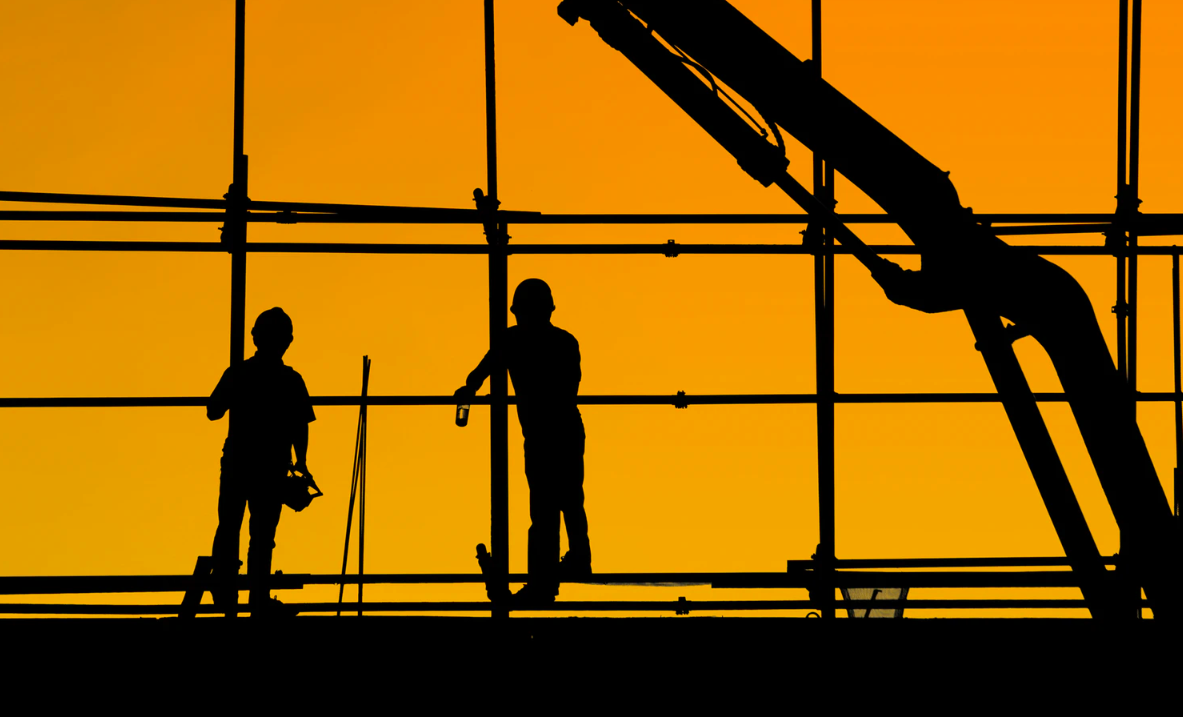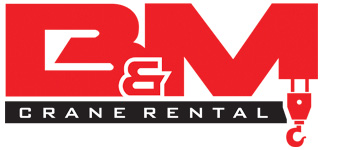Cranes have one of the most difficult and dangerous jobs to do on any construction project, lifting and moving thousands of tons at a time. Mobile crane safety hazards can potentially lead to some of the most dangerous situations on a work site.

Statistics by the Census of Fatal Occupational Injuries (CFOI) make for scary reading:
- There were 297 crane-related deaths between 2011 and 2017.
- Falling loads factored into around 60% of cases.
- The private construction industry was home to 43% of fatal incidents.
That being said, there is no alternative to a crane when it comes to the role they perform on a project.
Luckily, we know what the most likely causes of worksite accidents involving cranes are. There are also well-established precautions you can take to mitigate any threat.
By reading about the most common hazards and how to prevent them, there’s no reason you should become a statistic.
Falling loads
As you might guess, falling loads are one of the most dangerous types of hazards which can easily result in mutilation or death. Cranes can lift thousands of tons of weight. On top of causing serious harm to personnel, falling loads can also wreak havoc on your worksite.
Incompetent operators, unsecured loads, and mechanical failure are the most likely causes of falling loads.
Precautions
- Ensure your operator is qualified and experienced: OSHA has recently stepped up their requirements for crane operators. Operators now also need to be qualified according to the class of the crane they’re operating. Also, ensure your operator has experience working with the specific crane and conditions.
- Inspect your crane frequently: Personnel should inspect cranes on a daily basis before work begins. Under harsh conditions, like extreme cold, your team should take this even more seriously.
- Be aware of your crane’s maximum capacity: The crane should come with a detailed chart illustrating the maximum capacity at different levels of boom extension and during weather conditions like rain, wind, or snow. OSHA attributes nearly 80% of all crane-involved incidents to overloading.
- Wear PPE at all times: Protective equipment might not seem useful against these heavy loads. However, smaller objects can also come loose and cause serious harm. PPE might be the difference between life and death in these cases.

Electric lines
Nearly half of all incidents involving cranes occur because of accidental contact with electrical lines. Cranes are made to reach higher and farther places which put them at risk of touching electrical structures, especially in dense areas like cities.
Because of limited visibility from the cabin, an operator may not always be able to see looming hazards from electrical structures. OSHA and ANSI both describe a 10-foot radius surrounding any electrical structure to be a “danger zone” which should be clearly marked and avoided.
OSHA provides safety measures under CFR 1910.333. Generally, it’s required that electrical equipment be powered off or de-energized wherever possible.
Precautions:
- Plan ahead of time: Try to establish the best location to position your crane even before it arrives.
- Personnel safety: Worksite personnel can potentially get electrocuted if they are in contact with the crane when it touches electrical cables. Generally, it’s good advice for no one to be near the crane without reason when it’s being used.
- Be vigilant: There should always be a supervisor or overseer on-site when operating a crane. If specific hazards are present, having a supervisor on-location is even more crucial so that he can help guide and alert the operator.
Tipping crane
A tipping crane can be even more dangerous and costly than falling loads. A crane itself is a heavy object that can easily lead to injury, death, or serious worksite damage. If you are renting a crane, you are also responsible for its return condition, which means any damage to the crane will come out of your pocket.
The most common causes of a tipping crane are overloading and uneven footing. A crane can also tip if it is moved too fast or the boom is extended too far for the current load. Your team can avoid most of these causes by responsibly operating the crane. Always try to position the crane on as flat and level a surface as possible.

Precautions
- Use a suitable crane: Depending on exactly how poor the terrain is, you should select the proper type of mobile crane for the job. Crawler cranes, all-terrain cranes, and off-road cranes are all better at dealing with unpaved surfaces. Crawler cranes also offer more stability, even without the outriggers deployed.
- Use outriggers whenever possible: Outriggers are stabilizers that extend outward from the crane with footings to press on the ground. They are especially effective when moving loads over long, horizontal distances.
- Don’t overdo the loads: Cranes usually come with both a fixed as well as an optional counterweight. Make sure you deploy these counterweights according to your needs and don’t overdo the maximum capacity.
Don’t take chances when operating a crane!
All kinds of heavy machinery can be potentially dangerous when used without caution. As the largest and most heavy-lifting piece of equipment on any worksite, a crane is no different. Protect yourself and your employees by being proactive when it comes to crane safety.
- Deploy appropriate signage: Your team should use hazard signs to clearly highlight any and all potential hazards on the worksite. Personnel should also use signs to denote the very fact that an overhead crane will be used on the site.
- Read up on OSHA requirements and standards: OSHA provides a significant amount of literature on safe crane operation, proper maintenance, and industry standards. Find most of it under CFR 1910.179.
- Look out for the weather: As we mentioned above, weather conditions can affect the operating capacity of a crane. They can also affect the operator’s ability to do their job, because of reduced visibility, etc. Crane operators should always take the seasonal and daily weather into account.
Plan ahead to mitigate mobile crane safety hazards
By keeping these mobile crane safety hazards in mind, planning ahead, and taking the necessary precautions, you can ensure your workers’ safety and keep your site incident-free.

